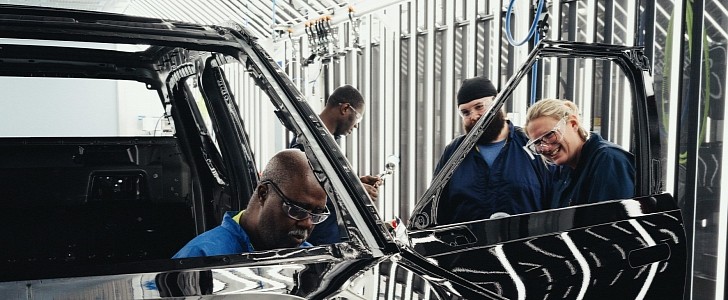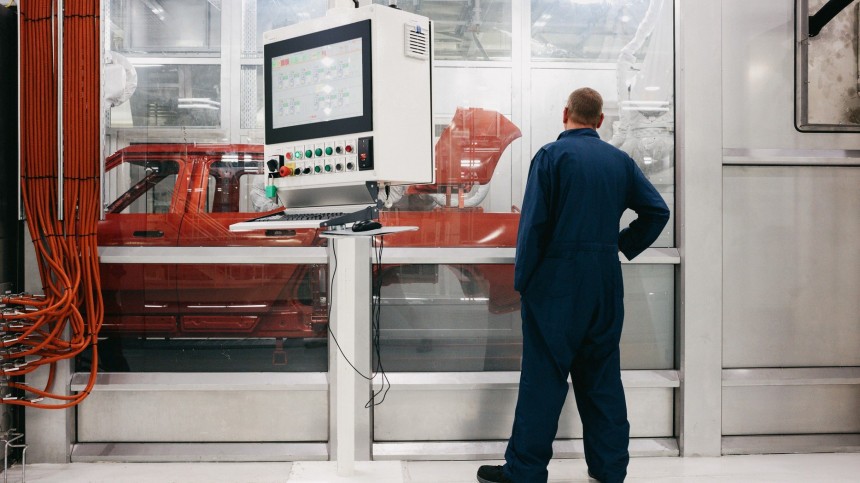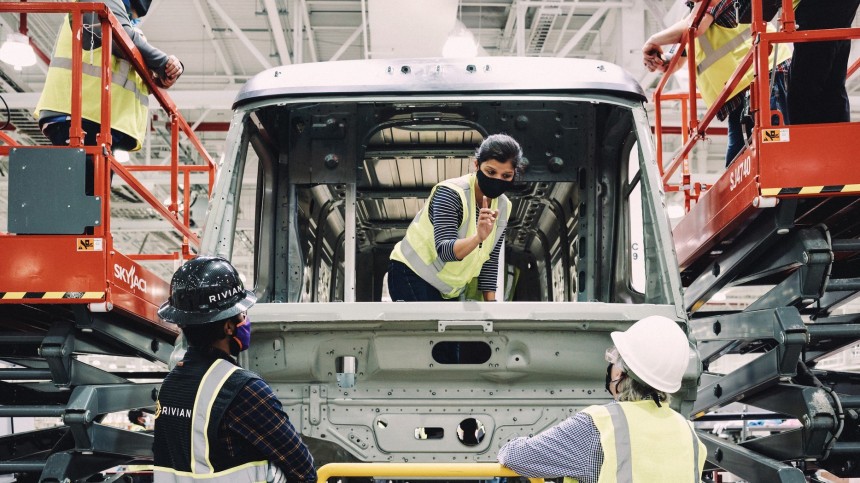Anyone who follows Rivian knows it once created a sports car prototype back in the early 2010s. Sometimes, this prototype gets back on the news as if Rivian was willing to manufacture it. According to RJ Scaringe, that will not be the case. The Rivian founder told investors why it was created and abandoned. More than that, he explains how the company found its unique way “to have impact.”
Scaringe did that in a letter included in a Form S-1. This document was presented to the U.S. SEC (Securities and Exchange Commission) for Rivian to pursue its IPO (initial public offering). Apart from the letter, Rivian also presented its investments in R&D (research and development) and pre-orders in that document.
The Rivian founder started his text by stating how he was in love with vehicles, restoring cars in his neighbor’s garage, and having automobile parts all over his place. At the same time, he realized that the object of that passion was not sustainable.
Loving the outdoors (which gives us a hint on why Rivian focused on SUVs and trucks), Scaringe felt conflicted at the same time that he perceived a business opportunity. He then said that he conceived Rivian “to drive our transportation system toward a future state that was sustainable and carbon neutral.” After he managed to create a team, they realized the sports car prototype would not help the company achieve this goal.
Curiously, that’s precisely the path that Tesla and multiple other companies before it have followed to get started. The idea they followed was to create exclusive sports cars with hefty price tags that helped them fund themselves to develop and sell less expensive products with higher sales volumes. For Rivian, that was not good enough to “maximize impact.”
At the same time it conceived the R1T and the R1S “to demonstrate how a clean sheet, technology-focused vehicle could eliminate long-accepted compromises,” it also focused on fleet-based mobility. Scaringe said his team felt the need to “shift some of the world’s mobility needs to non-personally owned fleets.” This is what led Rivian to realize it was necessary to redefine “the logistics and last-mile commercial vehicle space.”
It was this decision that put Rivian in contact with Amazon, one of its most prominent investors. In his letter, Scaringe also revealed that the delivery van is just part of the deal. Rivian’s “end-to-end fleet management platform” may be as crucial as the hardware. According to Scaringe, it “advances the operations and economics for running centrally managed fleets.” Unfortunately, the executive did not provide more information about that in his letter.
Regardless, it was enough for Amazon to invest $700 million in Rivian in 2019 and a lot more ever since. Apart from benefitting from this fleet management platform, Amazon probably wants a piece of future Rivian businesses in the area. Scaringe said that the deal with the internet giant allows Rivian “to pursue a range of other sizes, use cases, and markets.” In other words, the delivery van is just the beginning.
The Rivian founder then credited his team as the company’s most valuable asset. Although that looks like HR directors’ jargon, Scaringe added an element that makes it more credible: his team’s ability to “show up for hard discussions” and how they “react to seemingly unsolvable and complex problems.” That has created a culture that is what Scaringe declared to value the most, which may play a role in attracting talent. Tesla is even suing Rivian for that.
If you want to understand how Rivian managed to raise $10.5 billion before it even delivered any vehicles, reading Scaringe’s letter will be enlightening. It does not reveal all, but it shows that there are more ways to start a car company than we previously thought – and they may work just fine.
The Rivian founder started his text by stating how he was in love with vehicles, restoring cars in his neighbor’s garage, and having automobile parts all over his place. At the same time, he realized that the object of that passion was not sustainable.
Loving the outdoors (which gives us a hint on why Rivian focused on SUVs and trucks), Scaringe felt conflicted at the same time that he perceived a business opportunity. He then said that he conceived Rivian “to drive our transportation system toward a future state that was sustainable and carbon neutral.” After he managed to create a team, they realized the sports car prototype would not help the company achieve this goal.
At the same time it conceived the R1T and the R1S “to demonstrate how a clean sheet, technology-focused vehicle could eliminate long-accepted compromises,” it also focused on fleet-based mobility. Scaringe said his team felt the need to “shift some of the world’s mobility needs to non-personally owned fleets.” This is what led Rivian to realize it was necessary to redefine “the logistics and last-mile commercial vehicle space.”
It was this decision that put Rivian in contact with Amazon, one of its most prominent investors. In his letter, Scaringe also revealed that the delivery van is just part of the deal. Rivian’s “end-to-end fleet management platform” may be as crucial as the hardware. According to Scaringe, it “advances the operations and economics for running centrally managed fleets.” Unfortunately, the executive did not provide more information about that in his letter.
The Rivian founder then credited his team as the company’s most valuable asset. Although that looks like HR directors’ jargon, Scaringe added an element that makes it more credible: his team’s ability to “show up for hard discussions” and how they “react to seemingly unsolvable and complex problems.” That has created a culture that is what Scaringe declared to value the most, which may play a role in attracting talent. Tesla is even suing Rivian for that.
If you want to understand how Rivian managed to raise $10.5 billion before it even delivered any vehicles, reading Scaringe’s letter will be enlightening. It does not reveal all, but it shows that there are more ways to start a car company than we previously thought – and they may work just fine.










